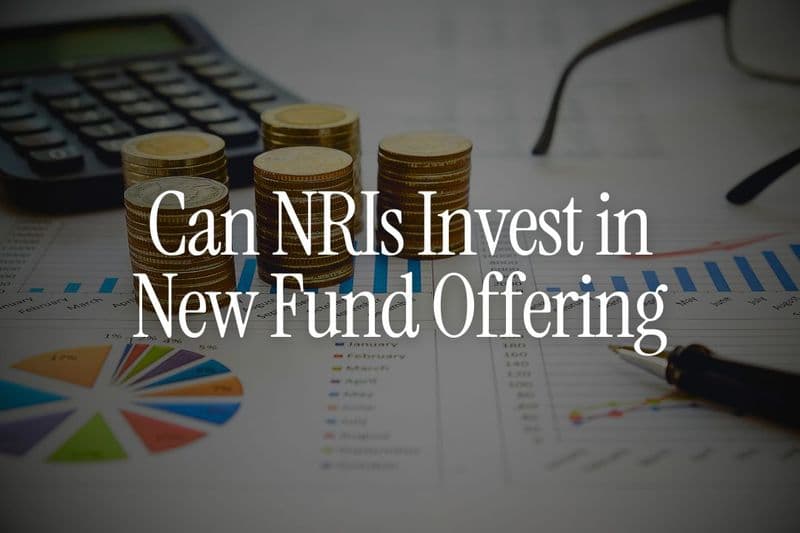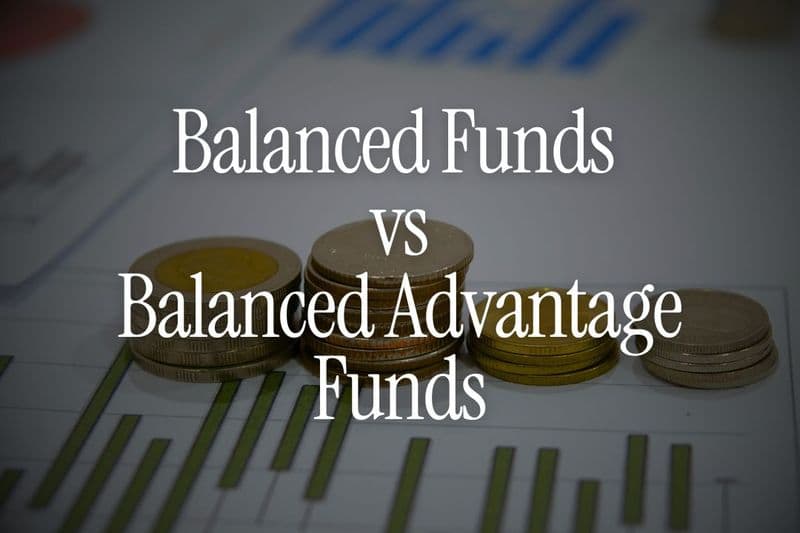
You've built a career abroad. You've saved in dollars or dirhams. Now you're looking at India - not just for returns, but for rupee exposure, portfolio balance, and a hedge against currency swings.
But here's the dilemma: do you go all-in on equity and risk volatility?
Or play it safe with debt and miss out on growth? What if there was a way to hold both - plus gold - in one fund, managed by professionals who rebalance based on market conditions?
That's where multi-asset allocation funds come in. At Belong, we've seen hundreds of NRIs in the UAE and beyond struggle with this exact question.
Our WhatsApp community is full of conversations about diversification, tax efficiency, and repatriation rules. This article answers all of it - backed by real data, regulatory facts, and practical steps you can take today.
Why NRIs Are Turning to Multi-Asset Funds in 2025
When you're managing wealth across borders, simplicity matters. You don't want to juggle 10 different investments, track multiple tax treatments, or worry about rebalancing your portfolio every quarter.
Multi-asset allocation funds invest across equity, debt, and gold, offering a balanced approach that helps manage risk while aiming for steady returns. SEBI mandates that these funds must invest at least 10% in a minimum of three asset classes.
Here's what this means for you as an NRI: instead of opening separate equity funds, debt funds, and gold ETFs - each with its own tax treatment and rebalancing needs - you get all three in one fund. The fund manager does the heavy lifting.
Multi asset allocation funds have averaged 18.5% annualised returns over the past three years (category average for direct plans), which sits comfortably between pure equity volatility and debt stability. Not too aggressive, not too conservative.
👉 Tip: If you're new to investing in India or prefer a hands-off approach, multi-asset funds are an excellent starting point. They give you instant diversification without the complexity.
What Exactly Are Multi-Asset Allocation Funds?
Let's break this down in plain English. A multi-asset allocation fund is a type of mutual fund that puts money in a diversified mix of asset classes, typically including equity (stocks), debt (bonds), and commodities like gold.
Unlike traditional mutual funds that focus on just one category, these funds spread your investment across three or more asset types. The goal? Reduce risk through diversification while still capturing growth potential.
Here's how asset allocation typically works:
- Equity (stocks): 40-70% - for long-term growth
- Debt (bonds): 20-40% - for stability and income
- Gold/commodities: 10-20% - as a hedge against inflation and market downturns
Each asset class responds uniquely to economic shifts, and fund managers strategically allocate assets based on prevailing market conditions. When equity markets are bullish, the manager might tilt toward stocks. During volatility, they shift to debt and gold.
Also Read - Types of Mutual Funds
How Is This Different from Balanced Funds?
Good question. Balanced funds typically stick to equity and debt. Multi-asset funds add a third layer - usually gold or REITs - which gives you better protection during market crashes.
Think of balanced funds as a two-legged stool. Multi-asset funds are a three-legged one. More stable. Harder to tip over.
How Multi-Asset Funds Work: Dynamic Rebalancing Explained
Here's where these funds shine. The fund manager plays a crucial role in determining investment style and type, with higher autonomy due to the fund's diversity.
Let's say you invest ₹10 lakh in January 2025. The fund starts with 60% equity, 30% debt, and 10% gold. By June, equity markets have surged 15%, so your equity portion is now 65% of the portfolio.
The fund manager steps in and sells some equity, buying more debt and gold to bring the allocation back to target. This is called tactical rebalancing - and you don't have to lift a finger.
Dynamic rebalancing enables tactical shifts without requiring investor intervention. This is especially valuable for NRIs who can't monitor Indian markets daily or don't have the time to execute trades.
Example: How Rebalancing Saved Investors in 2020
During the COVID crash in March 2020, equity funds dropped 25-30%. Multi-asset funds? They fell only 12-15% because debt and gold cushioned the blow.
By the time markets recovered in late 2020, these funds had already rebalanced back into equity at lower prices - capturing the upside.
👉 Tip: Use Belong's GIFT Nifty Live Tracker to monitor Indian market trends from abroad. It gives you real-time insights without the noise.
Taxation of Multi-Asset Allocation Funds for NRIs
This is where things get technical - but don't worry, I'll keep it simple.
The tax you pay on multi-asset funds depends on one thing: how much equity the fund holds on average during the year.
The taxation of multi-asset allocation funds depends upon the average equity allocation over the financial year. There are three scenarios:
Scenario 1: Equity Allocation ≥ 65%
The fund is treated as an equity-oriented fund. Tax rules:
- Short-term gains (held < 1 year): 20% tax
- Long-term gains (held > 1 year): 12.5% tax on gains above ₹1.25 lakh
Scenario 2: Equity Allocation < 35%
The fund is classified as a debt-oriented fund. Tax rules:
- All gains taxed at your slab rate, regardless of holding period (for investments after April 1, 2023)
TDS for NRIs
For equity-oriented (>=65%): 20% on short-term gains; 12.5% on long-term gains above ₹1.25 lakh.
For debt-oriented (\<65%): 30% flat on all gains (regardless of holding period).
You can claim excess TDS back by filing your income tax return. This is where proper tax planning becomes critical.
👉 Tip: Check your fund's equity allocation percentage in the scheme document before investing. It affects your entire tax liability. Use our Residential Status Calculator to understand your tax status first.
Also Read - Taxation on Mutual Funds
Double Taxation and DTAA Benefits
Here's a relief for NRIs worried about paying tax twice. India has entered in Double Tax Avoidance Agreements (DTAAs) with many countries to prevent double taxation.
Let's say you're an NRI in the UAE (where there's no personal income tax). You invest in a multi-asset fund and earn ₹5 lakh in long-term capital gains.
You'll pay 12.5% tax on gains above ₹1.25 lakh - that's ₹46,875 - only in India. No second tax in the UAE.
But if you're in the US or UK, and you've paid tax in India, you can claim a tax deduction for the same income in your home country under DTAA. This ensures you don't end up paying taxes twice.
To claim DTAA benefits, you'll need a Tax Residency Certificate (TRC) from your country of residence. Learn more about DTAA for NRIs in our detailed guide.
Also Read - DTAA Benefits on Mutual Fund Capital Gains for NRIs
How to Invest in Multi-Asset Funds as an NRI
Ready to invest? Here's the step-by-step process. It's simpler than you think.
Step 1: Open an NRE or NRO Account
You can invest in mutual funds on a repatriable or non-repatriable basis. If you invest through your NRE account, all the investment proceeds are fully repatriable.
- NRE Account: For investing foreign earnings. Principal and returns are fully repatriable (you can send it back abroad anytime)
- NRO Account: For investing Indian income (rent, dividends). Repatriation is limited to USD 1 million per year
Most NRIs in the UAE prefer NRE accounts because of full repatriation. If you're planning to return to India eventually, an NRO account might work better.
Need help choosing? Check out our guides on best NRI accounts and Indian banks in the UAE.
Step 2: Complete Your KYC
Once your residential status changes to Non Resident Indian (NRI), you are required to complete a fresh KYC process with updated documentation reflecting your NRI status.
You'll need:
- Self-attested copy of passport
- Overseas address proof (utility bill, bank statement)
- Recent photograph
- PAN card (apply if you don't have one)
- Visa or OCI/PIO card
Many AMCs now offer video KYC from abroad, so you don't need to visit India or the embassy.
Step 3: Choose Your Fund
Not all multi-asset funds are the same. Some lean heavily toward equity (60-70%), while others are more conservative (40-50% equity).
Match the fund's risk profile with your goals:
- Aggressive investor: Choose funds with 60%+ equity allocation
- Moderate investor: Go for balanced funds with 45-55% equity
- Conservative investor: Pick funds with higher debt allocation (50-60%)
Step 4: Invest via Lump Sum or SIP
You can invest in two ways:
- Lump sum: One-time investment. Good if you have a large corpus sitting idle
- SIP (Systematic Investment Plan): Monthly investments. SIP remains the safer approach for most investors, particularly when choosing the best multi-asset funds in India for long-term wealth creation
A mix of both works well - invest 60% as a lump sum and spread the remaining 40% over 12 months via SIP.
👉 Tip: If you started a SIP while in India and then moved abroad, you must inform the AMC of your change in residential status and update your KYC. Your SIP can continue from your NRE/NRO account.
Also Read - Best SIP Options for NRIs – Step by Step Guide
Best Multi-Asset Allocation Funds in India (2025)
Based on performance, consistency, and AUM, here are the top funds NRIs should consider. Performance data is as of October 2025.
Top 5 Multi-Asset Funds for NRIs
Fund Name | 3-Year Return (CAGR) | 5-Year Return (CAGR) | AUM (₹ Cr) | Expense Ratio |
|---|---|---|---|---|
Quant Multi Asset Allocation Fund | 22.46% | 27.47% | 3,818 | 0.61% |
Nippon India Multi Asset Allocation Fund | 22.22% | Not available | 7,759 | Not available |
UTI Multi Asset Allocation Fund | 21.18% | 15.61% | 6,106 | 0.42% |
ICICI Prudential Multi-Asset Fund | 20.92% | 21.07% | 68,000 | 0.72% |
Tata Multi Asset Allocation Fund | 17.28% | Not available | 4,278 | Not available |
Source: Angel One
Fund Spotlight: ICICI Prudential Multi-Asset Fund
This fund has been around for over 20 years and manages the highest AUM in the category. It has an AUM of ₹68,000 with a moderately high risk profile and maintains high-quality debt (AAA/AA ~95%).
The fund maintains about 66% equity, 24% cash/debt, and 10% gold. This conservative stance has helped it weather market downturns better than aggressive peers.
Repatriation Rules: Can You Send Money Back Home?
This is a big question for NRIs. You've invested in India - but can you transfer the money back to your UAE, US, or UK bank account when you redeem?
Answer: It depends on which account you used to invest.
Investments via NRE Account
An NRI can freely repatriate the funds held in NRE account without any limit. Both principal and gains can be sent back abroad anytime.
Investments via NRO Account
Proceeds are repatriable only up to USD 1 million cumulatively for all NRO accounts held in India per financial year (April–March).
You'll also need:
- Form 15CA and 15CB (filed online)
- CA certificate for amounts over ₹5 lakh
- Tax clearance from the income tax department
Learn more about NRE vs NRO accounts in our detailed comparison.
👉 Tip: If you plan to repatriate large amounts, split your investments across 2-3 financial years to stay within the USD 1 million limit without hassle.
Multi-Asset Funds vs Other NRI Investment Options
How do multi-asset funds stack up against other popular options? Let's compare.
Investment Option | Avg. Returns | Tax Efficiency | Liquidity | Diversification | Repatriation |
|---|---|---|---|---|---|
Multi-Asset Funds | 12-15% | Moderate | High | Excellent | Yes |
Equity Mutual Funds | 15-18% | Good | High | Sector-specific | Yes |
6-7.5% | High (NRE tax-free) | Medium | None | Yes | |
4.5-6% (USD) | Excellent (tax-free) | Medium | None | Yes | |
Real Estate | 8-10% | Low (high tax + paperwork) | Very Low | None | Limited |
Gold ETFs | 8-12% | Moderate | High | None | Yes |
When Should You Choose Multi-Asset Funds?
Choose multi-asset funds if:
- You want diversification without managing multiple investments
- You're okay with moderate returns (not chasing 20%+ equity returns)
- You prefer professional management over DIY investing
- You don't want to time the market or rebalance manually
- You're building a long-term portfolio for goals 5-10 years away
Avoid if:
- You're very aggressive and want pure equity exposure
- You need guaranteed returns (go for GIFT City FDs instead)
- You're investing for less than 3 years (short-term debt funds might be better)
GIFT City Alternative: Should You Consider It?
At Belong, we're big believers in GIFT City investments for NRIs. Here's why this matters.
GIFT City (Gujarat International Finance Tec-City) is India's first International Financial Services Centre (IFSC). It offers USD-denominated fixed deposits with 4-5% returns that are completely tax-free for NRIs.
Multi-Asset Funds vs GIFT City FDs
Feature | Multi-Asset Funds | GIFT City FDs |
|---|---|---|
Returns | 12-15% (INR) | 4.5-6% (USD) |
Currency risk | Yes (INR depreciation risk) | No (USD-based) |
Tax | 12.5-20% + TDS | 0% tax |
Risk | Moderate (market-linked) | Very low (capital protected) |
Liquidity | High (redeem anytime) | Medium (lock-in periods) |
The smart move? Use both. Allocate 60-70% to growth assets like multi-asset funds and 30-40% to stable, tax-free GIFT City FDs for capital protection.
We built Belong's platform specifically for this - combining GIFT City fixed deposits with tools to track and manage your entire NRI portfolio. Download the Belong app to see how it works.
Common Mistakes NRIs Make with Multi-Asset Funds
From conversations in our WhatsApp community, here are the top mistakes we see:
1. Not Updating Residential Status
You moved abroad but didn't inform your AMC. Now you're being taxed as a resident instead of an NRI - and you're paying the wrong TDS rate. Update your status immediately.
2. Ignoring Equity Allocation Changes
Multi-asset funds can shift their equity allocation. A fund that was 65% equity last year might drop to 60% this year - changing your entire tax treatment. Check quarterly reports.
3. Investing Without Understanding Tax Implications
NRI mutual fund taxation rules for hybrid funds depend on the fund's investments. If the fund mainly invests in equity, it is taxed as an equity fund. Know your fund's category before investing.
4. Assuming All Multi-Asset Funds Are the Same
Not all multi-asset funds are the same-some may lean more towards equity, while others prioritise debt or commodities. Read the scheme document carefully.
5. Overlooking Repatriation Rules
You invested via NRO thinking you can repatriate everything. You can't - there's a USD 1 million annual limit. Plan accordingly.
👉 Tip: Join Belong's Compliance Compass tool to check if you're following all FEMA and tax rules. Takes 2 minutes.
How to Monitor and Review Your Multi-Asset Fund
Investing isn't a "set it and forget it" game. Here's how to stay on top of your multi-asset fund:
Quarterly Review Checklist
- Check performance: Is the fund beating its benchmark? Compare against similar funds
- Review asset allocation: Has the equity/debt/gold mix changed significantly?
- Monitor fund manager changes: New managers often bring new strategies
- Track expense ratio: Has it increased? Higher expenses eat into your returns
- Review tax implications: Has the fund's equity allocation crossed 65% or dropped below 35%?
When to Exit
Consider exiting if:
- The fund consistently underperforms its category for 3+ quarters
- The fund manager leaves (especially for actively managed funds)
- Your risk profile changes (you need lower volatility as you near retirement)
- You've achieved your financial goal
Don't exit based on short-term volatility. Multi-asset funds are designed to smooth out ups and downs - give them at least 3-5 years.
Rupee Depreciation: How It Affects Your Returns
Here's something most NRIs don't think about: currency risk.
Let's say you invest $10,000 (₹8.65 lakh at ₹86.5/USD) in a multi-asset fund in January 2025. One year later, the fund has grown 12% to ₹9.3 lakh.
Great, right? But now the rupee has depreciated to ₹88.5/USD.. When you repatriate to dollars, you get $10,941 - only a 9.4% return in dollar terms, not 12%.
This is why tracking the rupee-dollar rate matters. Use Belong's Rupee vs Dollar Tracker to monitor historical trends and make informed decisions.
Hedging Strategy
To hedge against rupee depreciation:
- Keep 30-40% in USD-denominated assets (like GIFT City FDs)
- Invest in multi-asset funds that hold gold (natural hedge)
- Consider funds with international equity exposure
Tax-Saving Tip: Capital Gains Harvesting
Here's a smart tax strategy for NRIs. Long-term capital gains on equity funds are taxed at 12.5% only on gains exceeding ₹1.25 lakh.
This means the first ₹1.25 lakh of LTCG is tax-free every year. Here's how to use it:
- At the end of March, check your multi-asset fund profits
- If you have unrealized gains close to ₹1.25 lakh, redeem just enough to hit that limit
- Immediately reinvest the proceeds
- You've "harvested" ₹1.25 lakh tax-free and reset your cost base higher
Repeat this every year. Over 10 years, you save 12.5% tax on ₹12.5 lakh - that's ₹1.56 lakh saved!
Learn more about NRI tax exemptions and deductions in our comprehensive guide.
What If You Return to India?
Planning to move back to India? Your multi-asset fund investments don't disappear - but you'll need to update your status from NRI to Resident.
When you return to India, your mutual fund investments stay exactly where they are. What changes is your classification with the fund house.
Steps to take:
- Convert your NRE/NRO account to a regular resident savings account
- Update KYC with AMC showing your resident status
- Tax treatment changes: TDS is lower for residents
- Repatriation rules no longer apply (you're now a resident)
Consider opening a Resident Foreign Currency (RFC) account to keep some funds in USD/AED if you expect to travel frequently or have foreign obligations.
Read our complete guide on mutual funds when returning to India for detailed steps.
Alternatives to Multi-Asset Funds for Conservative NRIs
If you're looking for lower risk, here are some alternatives:
1. GIFT City Fixed Deposits
- Returns: 4.5-6% (USD)
- Tax: 0% for NRIs
- Risk: Capital protected
- Best for: Conservative investors, retirement planning
- Explore GIFT City FDs
2. Debt Mutual Funds
- Returns: 7-9%
- Tax: Based on slab rate
- Risk: Low to moderate
- Best for: 3-5 year goals, stable income
- Learn about debt fund taxation
3. NRE Fixed Deposits
- Returns: 6.5-7.5%
- Tax: Interest tax-free
- Risk: Very low
- Best for: Emergency funds, short-term goals
- Check best NRI FD rates
4. Alternative Investment Funds (AIFs)
- Returns: 12-20%
- Tax: Varies by fund type
- Risk: Medium to high
- Best for: High net worth investors
- Explore GIFT City AIFs
Final Thoughts: Is This Right for You?
Multi-asset allocation funds aren't perfect, but they're pretty close to ideal for the typical NRI investor - especially if you're in the UAE, working full-time, and don't have the bandwidth to actively manage multiple investments.
You get diversification, professional management, automatic rebalancing, and moderate returns with lower volatility than pure equity. The tax treatment can be complex, but it's manageable with proper planning.
At Belong, we've helped hundreds of NRIs structure their India portfolios using a mix of multi-asset funds, GIFT City FDs, and debt instruments. The key is matching investments to your goals, risk tolerance, and timeline.
Ready to take the next step?
- Use our NRI FD Rates Comparison Tool to compare options
- Check your tax status with our Residential Status Calculator
- Join our WhatsApp community to discuss with other NRIs and our experts
- Download the Belong app to explore GIFT City investments and track your portfolio
Remember: the best investment strategy is one you understand, can stick with, and aligns with your long-term goals. Multi-asset funds check all three boxes for most NRIs.
Have questions? Our team is here to help. Drop a message in the community or book a free consultation through the app.
Sources:
Angel One - Multi Asset Allocation Funds Analysis
Mastertrust - Best Multi Asset Allocation Funds 2025
Smallcase - Best Multi Asset Allocation Funds
INDmoney - Multi Asset Allocation Mutual Funds
Lakshmishree - Multi Asset Allocation Funds Guide
GoINRI - Multi Asset Allocation Funds for NRIs
Bajaj Finserv - Taxation of Mutual Funds for NRI
Aditya Birla Capital - Multi Asset Funds Taxation
ICICI Bank - Investing in Mutual Funds for NRIs
Fincash - Best Multi Asset Allocation Funds
Disclaimer: This article is for educational purposes only and does not constitute financial advice. Past performance does not guarantee future returns. Mutual fund investments are subject to market risks. Please read all scheme-related documents carefully and consult with a SEBI-registered investment advisor before investing.




